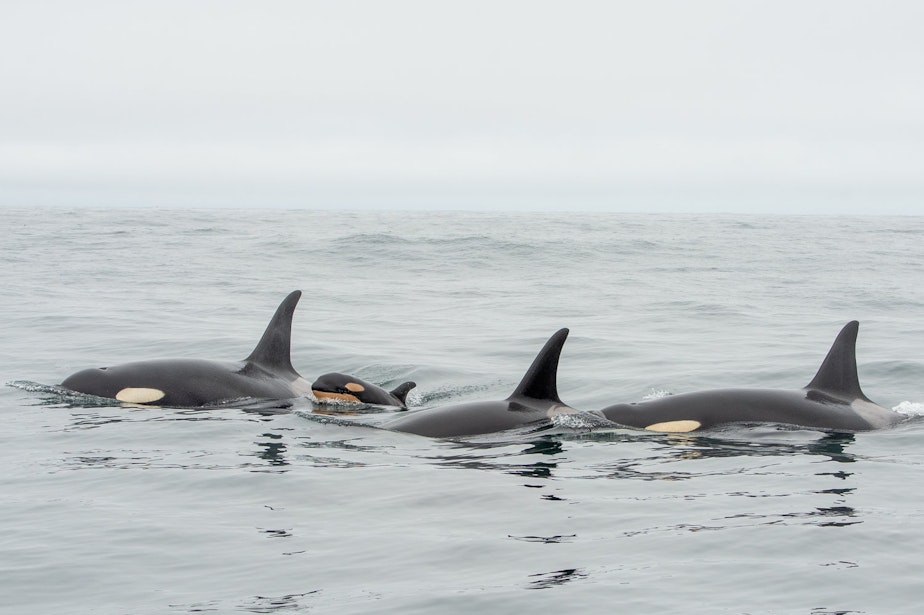Endangered orcas have been missing for 8 weeks. This is unprecedented, researchers say

It all comes back to salmon.
It’s been nearly three weeks since anyone has caught sight of a southern resident killer whale and nearly 8 weeks since the endangered orcas were spotted in their core habitat: around the San Juan Islands and southern Vancouver Island.
Despite their name, the southern residents often roam widely — as far as California’s Monterey Bay and southeast Alaska.
Yet orca researchers say it’s unprecedented for the whales to be gone so long from the inland waters of the Salish Sea, their main habitat this time of year.
“That’s unheard of. It’s never been the case when southern residents weren’t spotted in their home waters in June,” said biologist Deborah Giles with the University of Washington’s Center for Conservation Biology.
The southern residents’ population, just 76 whales at last count, is made up of three pods. K Pod hasn’t been seen since January. L Pod was last spotted in Monterey Bay on March 31.
Sponsored
“It all comes back to prey and chinook salmon,” said Monika Weiland Shields with the Orca Behavior Institute on San Juan Island. “Since about 2005, the Fraser River spring chinook stocks that they rely on in April, May and June have just crashed.”
In May, the Canadian government prohibited recreational fishing of chinook salmon, except for catch-and-release, anywhere Fraser River chinook might be caught.
The Fraser enters the sea just south of Vancouver, British Columbia, and about 20 miles north of the San Juans.
On the U.S. side of the border, the federal government listed Puget Sound chinook salmon as “threatened” under the Endangered Species Act in 1999, and stocks in key rivers like the Skagit have not recovered.
Shields said charter-fishing boats have been reporting good catches (and releases) of chinook salmon off the Canadian coast.
Sponsored
Commercial fishermen off California are also reporting their biggest chinook salmon catches in a decade.
“We're hoping that the whales are finding a feast somewhere else and are taking advantage of that good food resource,” Shields said.
“If they’re finding food elsewhere, that’s great,” Giles said. “I do believe they will continue to try to come back here and find food. It’s our job to make sure that it’s here when they come.”
One reason the whales’ whereabouts are unknown: The National Oceanic and Atmospheric Administration stopped attaching tracking tags to orcas in 2016 after a newly tagged whale washed up dead. The 20-year-old male known as L95 died of a fungal infection it caught from a satellite-linked tag fired into the base of its dorsal fin.
Whale watchers saw members of J pod, including a newborn calf, off Vancouver Island’s outer coast on May 30 and again on June 9.
Giles said the birth of a live calf suggests at least some of the missing orcas are finding good food supplies. Most southern-resident pregnancies in recent years have ended in miscarriages.
Sponsored
“Starving females are the ones that are miscarrying their offspring before the baby can be born alive,” Giles said. “The fact we got news of this J Pod baby born in May, that’s great for that family.”
Meanwhile, whale watchers have spotted plenty of orcas in the Salish Sea this year, but only the mammal-eating transient orcas, which are genetically and culturally distinct from the fish-eating residents.
The mammal-eating orcas have had an abundance of seals and sea lions to prey upon and have been showing up in record numbers this year.




